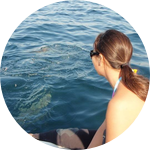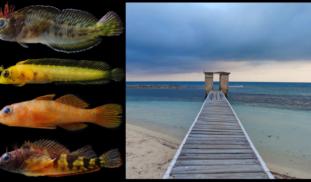Please wait...
About This Project
Humans are profoundly altering ecosystems worldwide. While more diverse communities of organisms are assumed to be more resistant to change, it is unknown whether biodiversity can truly buffer ecosystems against human disturbance. To understand the role of biodiversity for ecosystem stability, I am examining the response of small, cryptic fishes to disturbances on marine dock pilings from the icy waters of the Northern Atlantic to the tropical shores of Panama.

Browse Other Projects on Experiment
Related Projects
How do polar bears stay healthy on the world's worst diet?
Polar bears survive almost entirely on seal fat. Yet unlike humans who eat high-fat diets, polar bears never...
Uncovering hidden insect diversity associated with a likely undescribed gall-forming midge
Does a likely undescribed species of gall-forming midge (pers. comm. Ray Gagné) on Eriodictyon plants (Yerba...
Macrofungi of the California archipelago
The eight islands of the California Archipelago are a well-studied biodiversity hotspot — but we know almost...



